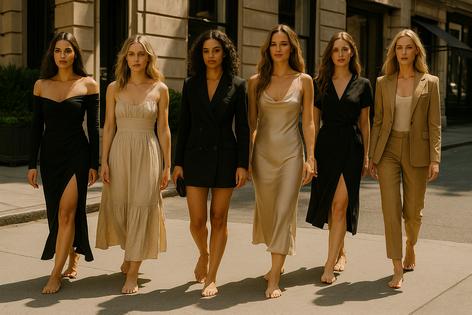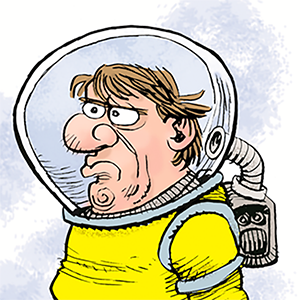Are bare feet convenient, comfortable, or fashion-fowrard?
Published in Fashion Daily News
Bare feet have transcended thresholds in recent years, evolving from a symbol of fringe subcultures and wellness advocacy into a legitimate presence in the world of high fashion. What was once considered impractical or eccentric is now gaining traction in both luxury circles and everyday style. The minimalist approach to footwear, and even its complete omission, reflects a broader shift in cultural values toward authenticity, body awareness, and naturalism.
In cities across the globe, particularly in warm climates and coastal communities, bare feet are more visible than ever. Whether it’s the rise of barefoot-style sneakers, health-driven barefoot running movements, or celebrities walking red carpets without shoes, the aesthetic and lifestyle have found a growing audience. The connection between form and function has never been so literal. Footwear brands such as Vibram, Vivobarefoot, and Xero Shoes have introduced minimalist shoes meant to mimic the barefoot experience. These designs feature zero-drop soles, wide toe boxes, and thin, flexible material that allow the foot to move and feel more naturally. Proponents claim health benefits including improved posture, stronger foot muscles, and reduced joint stress. While these shoes are still shoes in the literal sense, they represent a stepping stone toward social acceptance of unshod movement.
Luxury fashion has taken note. Balenciaga, known for pushing boundaries, introduced a “barefoot sandal” priced at hundreds of euros. The design, striking in its near absence of structure, raised eyebrows among consumers and critics alike. Though some called the concept pretentious or unwearable, its presence on runways signals a willingness within the fashion world to explore the aesthetic of the unshod foot. At Paris Fashion Week, singer Doechii appeared barefoot on the Chloé runway, pairing the look with bohemian garments that emphasized fluidity, groundedness, and natural grace. Her decision to go without shoes at a high-profile event sent a message: bare feet are not necessarily a sign of poverty or neglect. They can be intentional, expressive, and stylish.
This growing acceptance, however, is not confined to fashion capitals or online wellness influencers. In some countries, being barefoot in public is not only tolerated but culturally embedded. Nowhere is this more evident than in Australia and New Zealand, where the practice of going barefoot is relatively common and largely unremarkable. Visitors to the region often note that locals will enter shops, supermarkets, or casual restaurants without shoes. Children frequently attend school barefoot, and it is not unusual to see adults walking barefoot along suburban sidewalks or even through urban areas. The practice is not considered rebellious or countercultural. Instead, it reflects a lifestyle shaped by climate, outdoor activity, and cultural norms.
In New Zealand, a 2018 study published in the Journal of Foot and Ankle Research observed that over half the boys at one secondary school were habitually barefoot at home, during exercise, and even while attending classes. This openness may stem in part from Māori traditions that place significance on removing shoes during ceremonies and in homes. It also reflects the country’s broader informality and respect for natural living. The relaxed attitude extends across social classes, urban and rural environments, and age groups. Though some schools and businesses impose footwear requirements for safety or hygiene, enforcement is often lenient, and community standards favor personal comfort and practicality.
Australia shares many of the same traits. Its warm weather, beach culture, and laid-back ethos contribute to an environment where going barefoot is not frowned upon. Social media and online forums are filled with stories of Australians shopping, commuting, or dining barefoot. For many, wearing flip-flops, or “thongs,” is considered enough footwear for nearly any occasion, and bare feet are simply a step further. This normalization has caught the attention of foreign tourists, who sometimes express surprise or discomfort at the sight of barefoot patrons in cafes or public restrooms. Yet within the local context, it is not only acceptable but often preferable. Going barefoot is cheaper, more comfortable, and in many cases simply feels better.
This lived experience gives the barefoot trend in fashion a more authentic backdrop. While luxury designers dabble in minimalism and celebrities make headlines for stepping onto red carpets barefoot, millions of people in Australia and New Zealand do so without any fanfare. Their barefoot culture is not based on runway statements or social media aesthetics. It is built on lived habit and deep-rooted cultural acceptance. As such, it provides a valuable counterpoint to the stylized barefoot movement taking shape in other parts of the world.
Still, the global spread of barefoot fashion is tied to more than just lifestyle. It also reflects shifting attitudes toward embodiment and personal autonomy. Going barefoot requires awareness of the ground, the terrain, and the body. It is not merely an accessory choice. It is an embodied experience. For some, it carries spiritual or symbolic weight, representing freedom, connection to the earth, or a rejection of consumerism. For others, it is about physical health. The mechanics of walking barefoot engage muscles and joints in ways that modern shoes, especially narrow or padded ones, do not. Podiatrists remain divided on the long-term benefits or risks, but the debate itself underscores a growing interest in how footwear shapes our bodies.
Fashion publications and industry analysts have noticed the potential. Market research suggests that minimalist and barefoot-inspired shoes are expected to grow significantly over the next decade. Brands that once catered to niche runners and wellness enthusiasts now find themselves featured in style magazines and celebrity endorsements. The fusion of health and fashion has created a hybrid market that appeals to both function and form. This development mirrors other trends in fashion, such as the rise of athleisure and sustainable materials. In each case, the body is central—not as a mannequin for decoration, but as a moving, feeling presence that clothing and footwear must serve.
Critics remain. Some dismiss barefoot fashion as a gimmick or a passing fad. Others question the practicality of going barefoot in urban environments filled with glass, hot pavement, or unsanitary surfaces. In many parts of the world, being barefoot in public still carries a stigma, often associated with poverty, neglect, or nonconformity. And indeed, the barefoot movement intersects with issues of class and privilege. While some can afford to go barefoot as a statement or lifestyle, others do so out of necessity. The difference between choice and compulsion is not always visible, but it matters.
Still, the barefoot trend shows no signs of retreating. Whether in a rural town in New Zealand, a coastal suburb in Sydney, or a fashion house in Milan, the sight of unshod feet is becoming more common. What began as necessity or cultural practice now overlaps with health science, design philosophy, and fashion innovation. The result is a reexamination of what shoes mean, what they do, and what happens when we leave them behind.
In Australia and New Zealand, that conversation is already underway—not in theory, but in practice. For many, the question is not why someone would go barefoot, but why not. As the rest of the world catches up, fashion may find itself walking not in stilettos or sneakers, but in step with something older, freer, and more instinctive. As trends cycle and consumer tastes shift toward authenticity and embodied experience, the barefoot aesthetic offers a striking blend of rebellion and simplicity. Whether it’s high-end designers evoking the unshod silhouette or beachside locals living what others now call a “trend,” the bare foot carries with it a quiet kind of power. It refuses to be hidden, to be packaged, or to be entirely controlled. And in a culture increasingly seeking to reconnect—with the natural world, with physical presence, with itself—that refusal might just be the most fashionable choice of all.
========
This article was created, in part, utlizing AI tools.







Comments